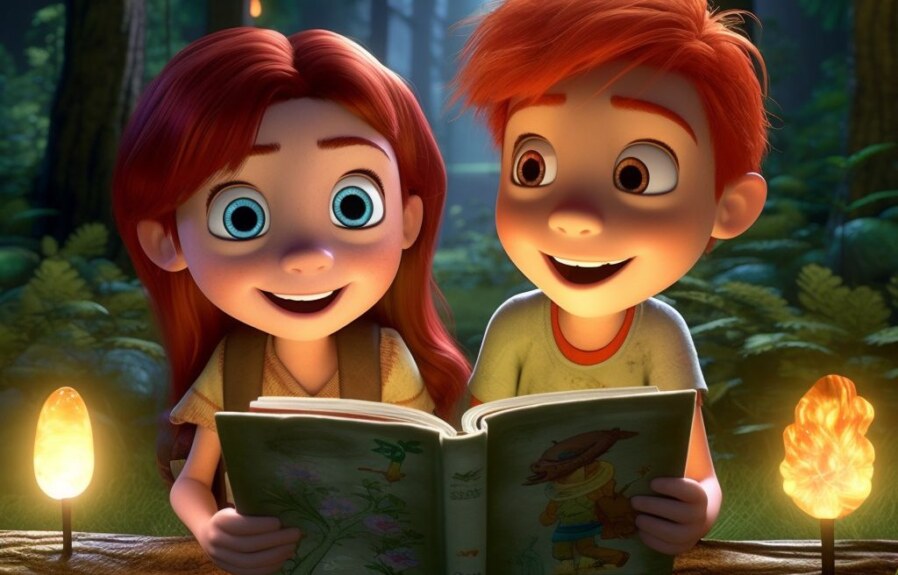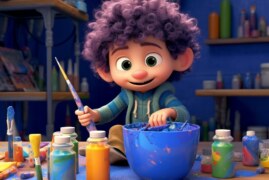Welcome to the colorful world of Art & Design! As an expert in this field, I believe every artist should have a sound knowledge about color theory, and the process of creating different shades and hues. In particular, the color Magenta has stood out as a fascinating color, with its vibrant and eye-catching appearance. Have you ever wondered how Magenta is made? In this informative article, we will explore the process of creating Magenta and uncover its hidden secrets. So, let’s dive into the world of color and discover how to make Magenta!
1. The Basics of Color Mixing: Understanding Magenta
How To Make Magenta: Understanding Color Mixing Fundamentals
Color mixing involves combining different primary colors to create secondary or tertiary colors. Understanding the colors’ primary properties is essential when mixing pigments to create new shades. One of the colors created through color mixing is magenta.
The Primary Colors: Red, Yellow, and Blue
In the traditional color wheel, red, yellow, and blue are considered primary colors. All other hues can be created by mixing primary colors. Red is considered the primary color for magenta because it contains the essential color properties needed to make magenta.
Understanding Magenta: A Hybrid Color
Magenta is a hybrid color. It is created by mixing red and blue pigments to make a vibrant hue that is not found in nature. Unlike other color mixing combinations, such as green or orange, magenta contains equal parts warm and cool tones.
The Science Behind Magenta Pigments
In the scientific world, magenta is created by the absence of green light. Magenta pigments reflect red and blue wavelengths of light, making it the perfect color for printing on a white background, such as newspapers or posters.
When creating magenta, it is essential to keep in mind the color properties of your pigments and the proper mixing ratios to achieve the perfect shade. Understanding the basics of color mixing will assist you in creating different beautiful shades that will add spice into your artworks.
2. The Science Behind Creating Magenta Pigments
How To Make Magenta:
Before we delve into the process of making magenta pigments, it’s important to understand the science behind this primary color. Magenta is a unique color in the sense that it doesn’t exist within the visible spectrum of light. Instead, it’s a combination of red and blue wavelengths of light that appear to our eyes as a new color.
The Color Wheel
To create magenta pigments, we first need to understand the color wheel. The color wheel is a basic tool for artists and designers that displays primary, secondary, and tertiary colors. The primary colors are red, yellow, and blue, while secondary colors are made by mixing two primary colors together to create green, orange, and purple. Tertiary colors are created by mixing a primary and secondary color together.
Creating Magenta Pigments
To create magenta pigments, you’ll need red and blue pigments. Start by adding a small amount of blue pigment to your palette, and then add red pigment in increments until the desired shade of magenta is achieved. Remember, a little goes a long way, so it’s best to work with small amounts of pigment at a time.
Another method is to mix equal parts of red and blue pigments together. This will create a rich, deep shade of magenta.
The Role of Binders
When creating magenta pigments, it’s important to keep in mind the role of binders. Binders are used to help the pigments adhere to the surface they are applied to, whether it’s paper or canvas. Without a binder, the pigment would simply flake off the surface.
In traditional oil and acrylic paints, binders such as linseed oil or acrylic polymer are often used. These can affect the final color of the pigment, so it’s important to choose a binder that complements the specific shade of magenta you’re trying to achieve.
By understanding , artists and designers can create custom shades and use this vibrant color in a wide range of applications.
3. Mixing Paints: A Step-by-Step Guide to Making Magenta
Magenta is a vibrant and bold color that can be created by mixing together blue and red paint. Here is a step-by-step guide to help you mix your own magenta paint using acrylic or oil-based paints:
Step 1: Start by choosing your primary colors. You will need a high-quality blue and red paint to create magenta. Ultramarine blue and cadmium red are commonly used for this purpose, but you can experiment with other shades depending on your preference.
Step 2: Squeeze a small amount of each color onto your palette. You can also create a larger amount of magenta by using equal parts of blue and red paint.
Step 3: Begin mixing the two colors together with a palette knife or brush. Start with a 50/50 ratio and adjust as needed until you have achieved your desired shade of magenta. Remember that magenta can vary from a bright pink to a deep purple, depending on the proportions of blue and red.
Step 4: Keep in mind that the viscosity of the paint will affect the color result. If the paint is too thick, add a small amount of water or medium to thin it out. This will also make it easier to mix the colors together evenly.
Step 5: Test the color by applying a small amount of the mixture to a sheet of paper or canvas. If the shade is not quite right, adjust the ratio of blue and red to create a darker or lighter magenta.
By following these steps, you can easily mix your own magenta paint and achieve the perfect shade for your artwork. Experiment with different shades and techniques to make your design stand out.
4. Creating Magenta from Natural Dyes and Pigments
Magenta can also be created using natural dyes and pigments. These dyes and pigments can be derived from various sources, such as berries, flowers, bark, and insects. Here is a guide on how to make magenta using natural materials.
Berries
Berries, such as raspberries and blackberries, can be used as a source of natural dye. Crush the berries to extract the juice, and then strain it through a fine mesh to remove any solid particles. Add alum to the juice to act as a mordant, which helps the dye adhere to the fabric. Simmer the fabric in the solution for about an hour, and then rinse it in cold water.
Flowers
Flowers, such as hibiscus and mallow, can also be used to create magenta dye. Boil the flowers in water, and then strain the solution to extract the dye. Add salt or vinegar to act as a mordant, and then soak the fabric in the solution for about an hour. Rinse the fabric in cold water.
Cochineal
Cochineal is a type of insect that can be used to create magenta pigment. Crush the insects and extract the pigment by boiling them in water. Strain the solution and add alum or cream of tartar to act as a mordant. Soak the fabric in the solution for about an hour, and then rinse it in cold water.
By using natural dyes and pigments, you can create unique and sustainable shades of magenta. Experiment with different materials and techniques to find the perfect hue for your art and design projects.
5. Tips and Tricks for Achieving the Perfect Shade of Magenta
How To Make Magenta:
Magenta can be a tricky color to achieve, but following these tips and tricks can help you get the perfect shade:
- Start with the right pigments: Magenta is created by mixing blue and red, but not all blues and reds will create the perfect shade. Look for pigments labeled as “magenta” or “fuchsia” to get the closest match.
- Use a palette: Mixing pigments on a palette allows you to control the ratio of blue and red, creating a more precise shade of magenta.
- Experiment with white: Adding white to magenta can create a lighter, more pastel shade, while adding black can create a darker, more muted shade.
- Don’t overmix: Mixing pigments too much can create a muddy or grayish shade, so avoid overmixing and adjust your ratio of blue and red as needed.
- Consider complementary colors: Pairing magenta with complementary colors like green or yellow can make the shade pop and add depth to your artwork or design.
Remember to always test your magenta on a small area before applying it to your artwork or design to ensure the perfect shade.
6. Exploring Creative Ways to Use Magenta in Art and Design
Magenta is a vibrant color that can add a bold and expressive touch to any artwork or design project. Here are some creative ways to incorporate magenta into your work:
1. Use Magenta as a Primary Color
Magenta is one of the three primary colors in the subtractive color system (along with cyan and yellow). In this system, mixing magenta with cyan creates blue, while mixing magenta with yellow creates red. Using magenta as a primary color can add depth and richness to your color palette.
2. Pair Magenta with Contrasting Colors
Magenta works well with colors that are opposite on the color wheel, such as green or yellow-green. This contrast can create a visually striking effect in your artwork or design.
3. Use Magenta in Gradient Backgrounds
A gradient background that fades from magenta to a lighter shade can add a dynamic and energetic feel to your design. This effect can be achieved using CSS or graphic design software.
4. Experiment with Textures and Patterns
Magenta can be used to add depth and texture to a design element. Try incorporating magenta into a pattern or texture, or use magenta to create a gradient effect on a textured surface.
5. Use Magenta in Photography and Fashion
Magenta can add a pop of color to photography and fashion. Try using magenta in a photo shoot or incorporating magenta into a clothing or accessory design.
Magenta is a versatile and attention-grabbing color that can add a powerful element to any work of art or design. Experiment with different ways to incorporate magenta into your work and see where your creativity takes you.
7. Advancements in Magenta Production: From Early History to Modern Day Practices
Magenta has been a beloved color in the art world for centuries. It’s a rich and vibrant hue that adds depth and dimension to any art piece. Over the years, advancements in technology and science have revolutionized the way we produce magenta pigments.
Early History of Magenta Production
Initially, magenta was extracted from the root of the rubia plant. The process was slow and cumbersome, and the resulting color was often dull and uneven. In the mid-19th century, the French chemist Francois-Emmanuel Verguin created the first synthetic magenta pigment, which he called “fuchsine.”
Advancements in Modern Day Magenta Production
Today, magenta is produced using a variety of modern techniques, including chemical synthesis and nanotechnology. Companies like BASF and Clariant have developed new processes that produce higher quality and more consistent pigments. These pigments offer better stability and durability, making them ideal for commercial and industrial applications.
In recent years, there has also been a renewed interest in using natural dyes and pigments for magenta production. This is driven by a growing demand for eco-friendly and sustainable products. Natural magenta pigments can be extracted from a variety of sources, including roots, berries, and insects.
In conclusion, advancements in magenta production have come a long way since the early days of the rubia plant. Today, we have a variety of synthetic and natural pigments that offer better quality, consistency, and sustainability. As artists and designers continue to push the boundaries of creativity, we can expect to see even more exciting advancements in the future.
People Also Ask
What colors make magenta?
Magenta is a reddish-purple color that can be made by mixing equal parts of red and blue hues. Alternatively, you can mix a small amount of blue with a larger amount of red to create magenta.
How do you create the perfect magenta color?
To create the perfect magenta color, you can mix together equal amounts of red and blue. You can also add a small amount of yellow to make the color warmer or add white to make it lighter.
What is the RGB value for magenta?
The RGB value for magenta is 255, 0, 255. In other words, magenta is a combination of equal amounts of red (255), blue (0), and green (255) colors.
What is the CMYK value for magenta?
The CMYK value for magenta is 0%, 100%, 0%, 0%. In print design, magenta is one of the four process colors used in color printing.
What are some different shades of magenta?
There are many different shades of magenta, ranging from deep purple to bright pink. Some popular shades of magenta include fuchsia, rose, and raspberry.
Conclusion
Magenta is a rich, vibrant color that can be created by mixing equal parts of red and blue hues. This reddish-purple color is popular in many industries, from fashion to print design. Whether you’re mixing paint or working with digital color values, knowing how to make magenta is an essential skill for any artist or designer. Experimenting with different shades of magenta can help you create unique and eye-catching designs.



